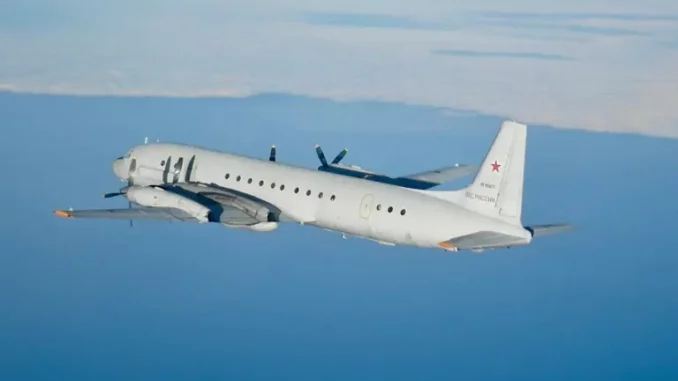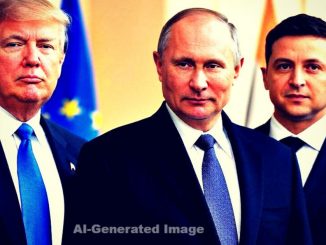
A Russian Il-20 reconnaissance plan over the Baltic Sea on Sept. 21, 2025. (Germany at NATO / X)
Published September 22, 2025
Air force fighter jets from Germany and Sweden have been scrambled to intercept and track a Russian surveillance plane that was flying over the Baltic Sea
On September 21, 2025, NATO forces responded swiftly as German and Swedish fighter jets intercepted a Russian Il-20M reconnaissance plane flying over the Baltic Sea without a filed flight plan or radio communication. The aircraft entered international airspace from Russia, prompting German Eurofighter jets to visually identify and monitor it before handing over the operation to Swedish Gripen jets. The mission concluded without incident, but it underscores ongoing security concerns in the region.
This incident follows other recent provocations, including an intrusion by three Russian MiG-31 fighter jets into Estonian airspace on September 19, which lasted 12 minutes. Estonia condemned the violation as “brazen” and requested NATO consultations under Article 4, which allows member nations to seek talks if their security is threatened.
 Implications
Implications
The recent Russian aerial activity over the Baltic Sea has several significant implications for regional security, NATO posture, and international relations:
-
Heightened NATO Readiness – The scramble of German and Swedish fighter jets signals that NATO is closely monitoring Russian movements and is prepared to respond quickly to any airspace violations. This reinforces the alliance’s deterrence posture but also increases the risk of mid-air incidents if tensions rise.
-
Escalating Regional Tensions – Repeated unauthorized flights, like the Il-20M reconnaissance mission and the prior MiG-31 intrusion into Estonian airspace, heighten anxiety among Baltic and Northern European countries. It signals Russia’s willingness to challenge NATO’s vigilance, potentially testing the alliance’s responses.
-
Security Policy Adjustments – Countries in the Baltic region may accelerate investments in air defense, radar coverage, and rapid-response fighter capabilities. NATO may also consider increasing joint patrols or exercises in the area to demonstrate solidarity and deterrence.
-
Geopolitical Signaling – Russia’s flights act as strategic messaging, demonstrating its reach and surveillance capabilities while probing NATO’s coordination. These missions can also influence diplomatic negotiations and discussions in forums like the UN or NATO councils.
-
Risk of Miscalculation – Although the intercepts concluded without incident, repeated close encounters carry the risk of accidental escalation, especially in a tense geopolitical environment. Even minor misunderstandings in such operations could have wider consequences.
In short, these airspace violations are not isolated events—they reflect ongoing strategic posturing and serve as reminders of the fragile security environment in Northern Europe. NATO allies are likely to remain vigilant, and the Baltic region may see more frequent intercepts and military exercises in response.
 Overall Takeaway:
Overall Takeaway:
The recent scramble of German and Swedish fighter jets to intercept a Russian reconnaissance plane over the Baltic Sea underscores the fragile security dynamics in Northern Europe. While no incident occurred, these repeated airspace violations highlight ongoing tensions between NATO and Russia, signaling both strategic posturing and a test of alliance readiness. For NATO members, the events serve as a reminder of the importance of vigilance, rapid response capabilities, and regional cooperation to prevent miscalculations that could escalate into a broader conflict. As Russian aerial activity continues near NATO borders, maintaining a careful balance between deterrence and diplomacy remains crucial for regional stability.
SOURCES: THE KYIV INDEPENDENT – NATO jets intercept Russian spy plane over Baltic Sea, Germany says
AL JAZEERA – Germany scrambles jets after Russia military aircraft flies over Baltic Sea
ABC NEWS – German, Swedish fighter jets track Russian reconnaissance plane over Baltic Sea





Be the first to comment